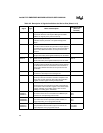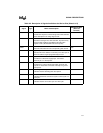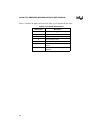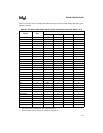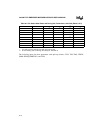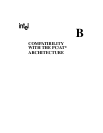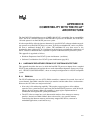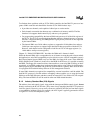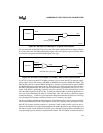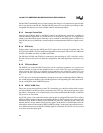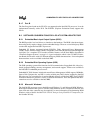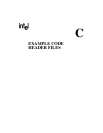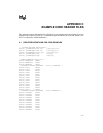
Intel386™ EX EMBEDDED MICROPROCESSOR USER’S MANUAL
B-2
To eliminate these problems with an 8237A DMA controller, the Intel386 EX processor inte-
grates a DMA controller unit that differs from the 8237A DMA in these ways:
• It provides two channels, each capable of either byte or word transfers.
• Each channel can transfer data between any combination of memory and I/O. The Bus
Interface Unit supports both external fly-by and two-cycle operation.
• For programming compatibility, the internal DMA unit preserves all of the 8-bit registers of
the 8237A. The 8237A’s command register bits that affect two-channel memory-to-memory
transfers, compressed timing, and DREQ/DACK signal polarity selection are not supported
by the internal DMA.
• The internal DMA uses 26-bit address registers to support the 26-bit address bus and uses
24-bit byte count registers to support larger data blocks than are possible with the 8237A.
However, each channel can be configured to look like an 8237A with page registers (i.e.,
16-bit address and byte count registers).
Chapter 12, “DMA CONTROLLER,” describes the DMA unit’s features in detail.
While the internal DMA offers a comprehensive set of features to meet the needs of most embed-
ded applications, strict DOS compatibility may be critical to some. A PC/AT compatible system’s
Basic Input Output System (BIOS) only uses the DMA for floppy disk access. Since both MS-
DOS* and Microsoft* Windows* make calls to the BIOS for disk access, it is possible to modify
the BIOS. The floppy disk controller allows data transfers to occur using DMA, Polling, or Inter-
rupt based. A few BIOS vendors have implemented the transfers using polling for disk transfers.
Some programs bypass the BIOS and go directly to the hardware; typically, these are disk inten-
sive programs like hard disk backup software or disk management software.
If more DMA channels are required for compatibility, external controllers could be added. The
Intel386 EX processor’s flexible address remapping scheme enables you to map the internal
DMA out of the DOS I/O space and then connect an external 8237A to achieve PC/AT compati-
bility. The internal DMA can still be used for other non-DOS related functions.
B.1.2 Industry Standard Bus (ISA) Signals
The address, data, and control signals, along with the interrupt and DMA control signals, do not
directly conform to the PC/AT ISA bus. (They more closely match the Intel386™ SX processor
local bus signals.) However, you can easily construct a subset PC/AT ISA bus from these signals
or a combination of these signals. For example, the AEN signal is typically generated as shown
in Figure B-1 in a PC/AT-compatible system.



